Monday, October 26th, 2009
More from Weedon Island Preserve:
We’ve seen roseate spoonbills before, but always while I was driving. They seem solitary and moderately shy. This is the first time we’ve gotten pictures of them.
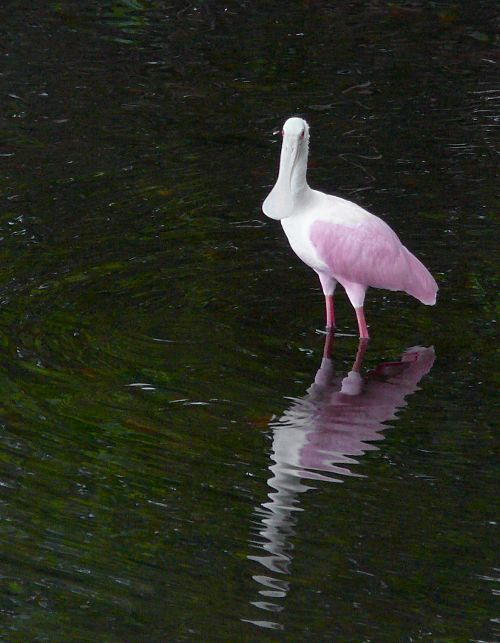
This is also the first time I’ve seen green anoles. They are native, but the brown anoles, which I believe are imported, are much more common.
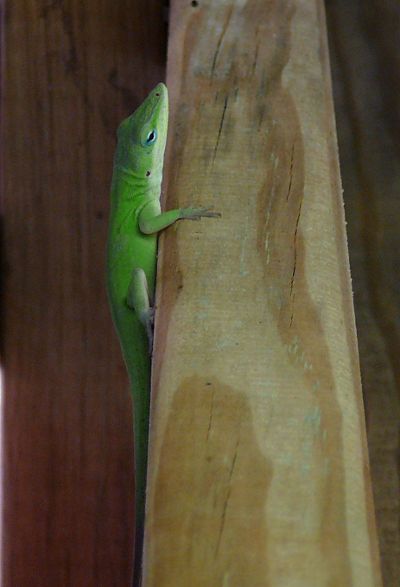
Monday, October 19th, 2009
Last weekend, when it was still warm, we went back to Caledesi Island State Park. You can technically walk from Clearwater Beach to the island, but it’s easier to take the ferry. This was not as cool of a visit as when we came before in the winter; even in a strong breeze I had mosquitoes latching onto me like I’m the best stuff on earth. Three bites. We tried swimming, but there are more waves here than at Fort De Soto, and terrible visibility (barely as far as my outstreched hand).
The beach is still really pretty, and has more shells than the more accessible beaches further south. Although they are a bit hard on the feet. Combined with the already low visibility, I really should invest in some kind of swim shoes.
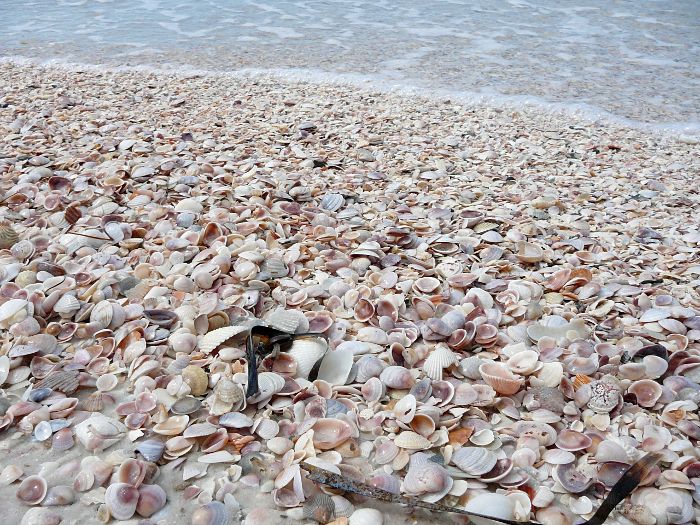
From the bare sand, sea oats and other brave plants start, and then palmettos.
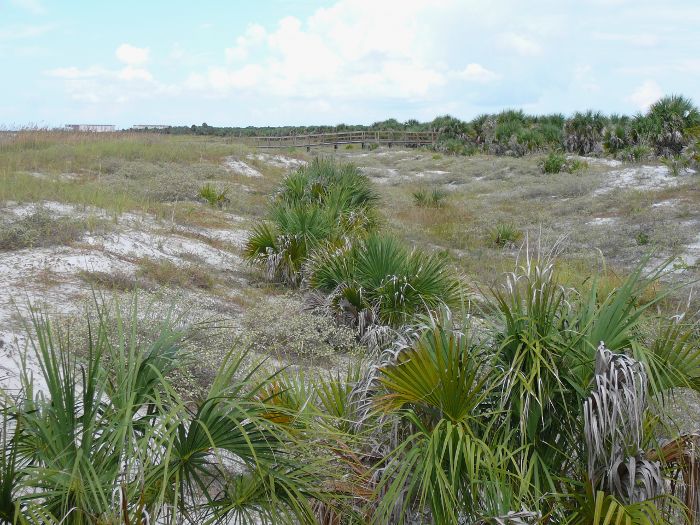
We’ve been getting quite a bit of rain at the house that hasn’t registered at the official airport guage, but the gigantic thunderheads from the summer are mostly gone.

The water between Caledesi and Honeymoon Island (where you catch the ferry) is quite shallow, much of it wading depth or dry at low tide. There are lots of channel buoys and no wake signs that make for popular osprey and cormorants perches. I haven’t gotten any satisfactory osprey pictures, but here is a cormorant, panting.
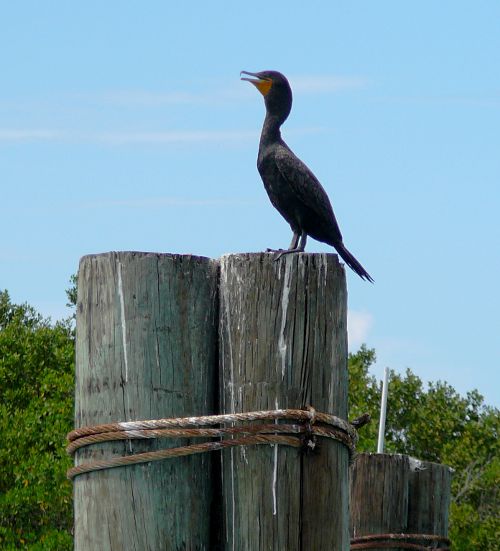
I had thought I posted this before, but here is a female anhinga (taken at Sawgrass Lake Park), which, especially with the males which are all black, look and behave very similar to cormorants. Both swim underwater, but don’t have waterproof feathers and so they are often seen holding their wings out to dry, like this one. Anhingas, however, have long straight bills, while cormorants have a hook on the tip of theirs.
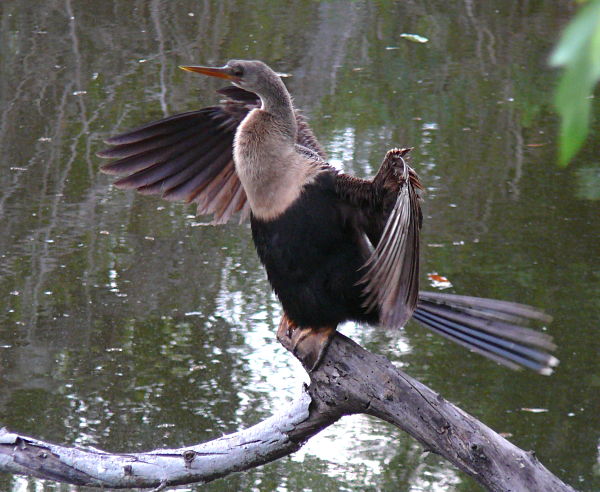
Monday, October 19th, 2009
It’s gotten cold all of a sudden. Lovely frisbee weather besides the wind, though. The lizards are all sluggish, and people are pulling out their sweaters to go with their flip flops. And for the first time in like six months, it’s below 79 in the house.
We tried planting a few herbs and tomatoes today. We don’t have much hope for them.
Over the summer, this vine has been enthusiastically growing over the bushes around the yard. It’s been making bean pods:

And we’ve had a mockingbird hanging out by our front gate lately. I have yet to get a picture of it doing the flashing wings bug dance.
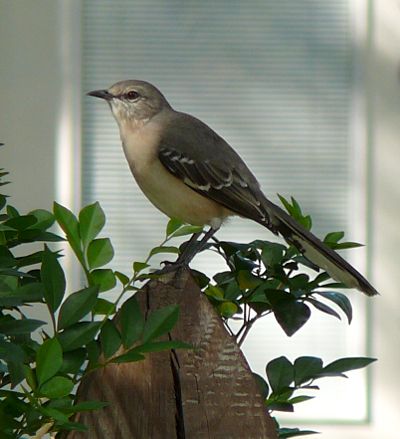
Wednesday, September 30th, 2009
This area gets a lot of rain all at once. This was our street right after a rainstorm on the 24th

And here was the intersection near our house
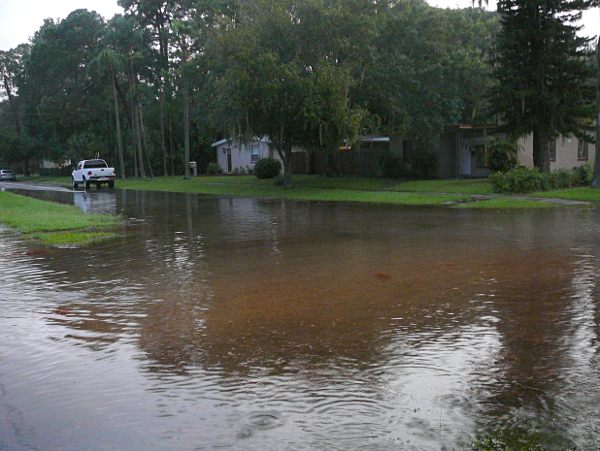
But the soil is very sandy and this all drains away quite quickly. This is what it looks like normally

That intersection has three, maybe four, storm drains, all large enough to lose litters of puppies in

Friday, September 25th, 2009
These were taken at Sawgrass Lake Park.
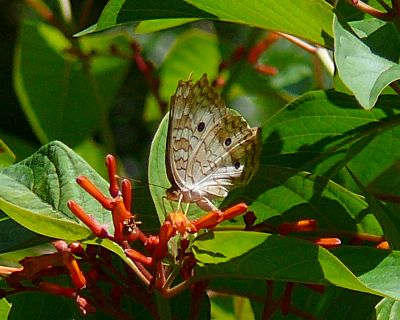
There were so many butterflies on this bush, mainly bright yellow ones, but they were so flitty and refused to stay in place for a picture. This is a white peacock, slightly worse for wear.
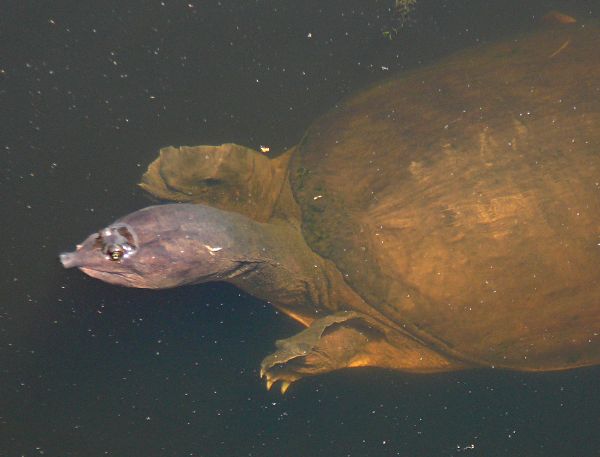
We saw several soft shelled turtles. They have odd little tubular noses, which lower their cuteness factor significantly in my opinion.
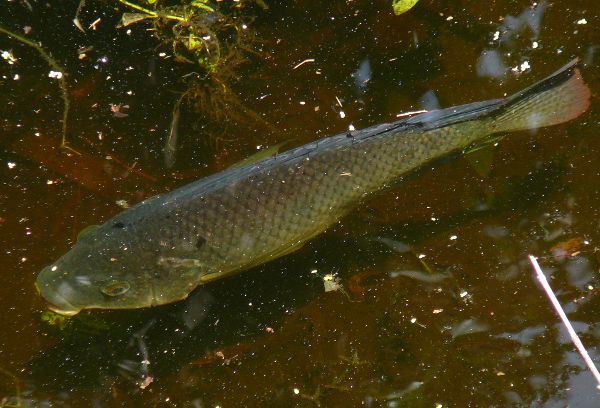
These tilapia (which looks generically fishy to my untrained eyes) flash pink from their lips when they snap at food.
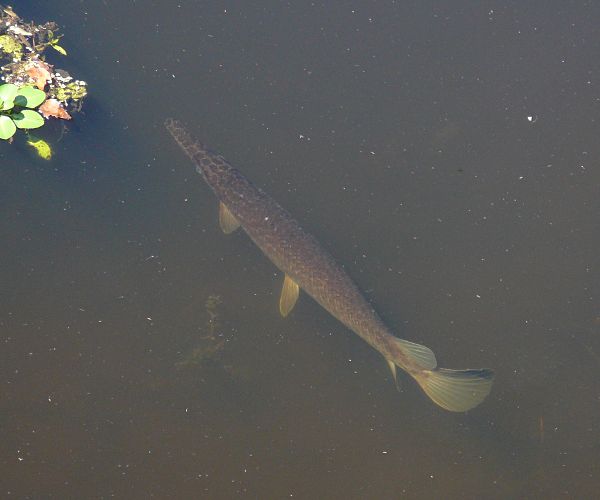
While not looking generically fishy, we couldn’t figure out which breed of gar these were. Gar can breathe by gulping air, probably an asset in the slow moving water at this park.
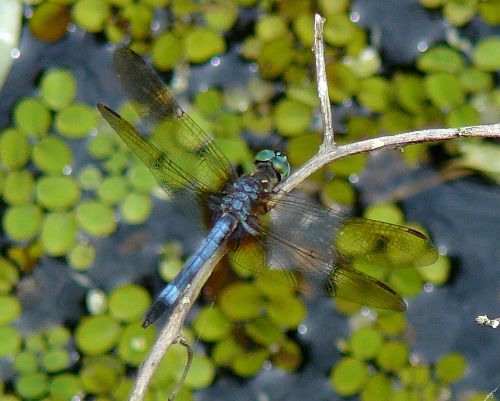
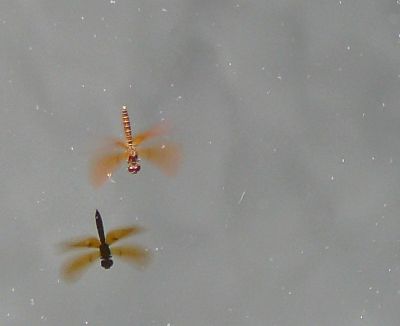
My guess is that the top is a great blue skimmer and the lower is an eastern amberwing, but dragonflies are harder to identify than butterflies. There was also a really cute catfish flipping about in the marshy area. It would poke its little barbels out and then duck back under the surface far too fast for a picture, though.
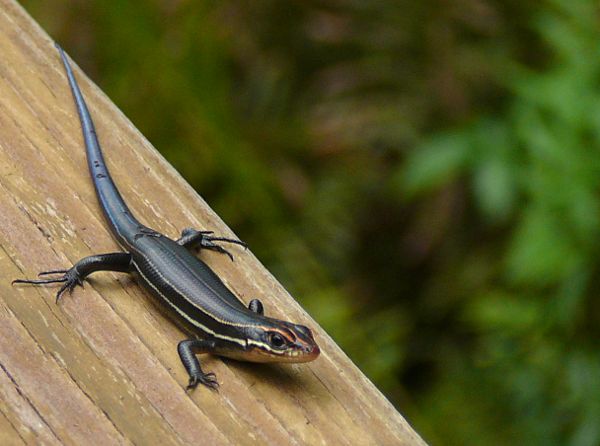
I wish more of my pictures turned out like this skink.
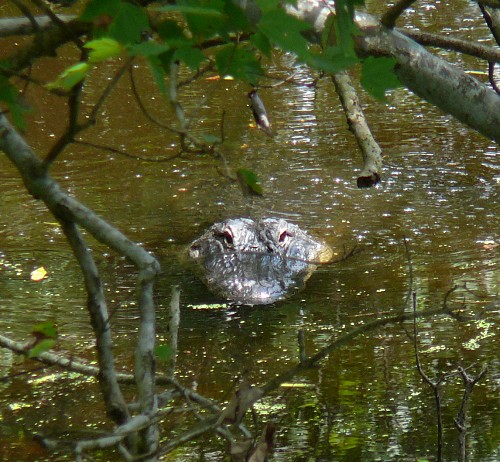
The difference, far away, between an alligator and a log is that at the correct distance away from the main protrusion is a much smaller break in the water surface for their nose.
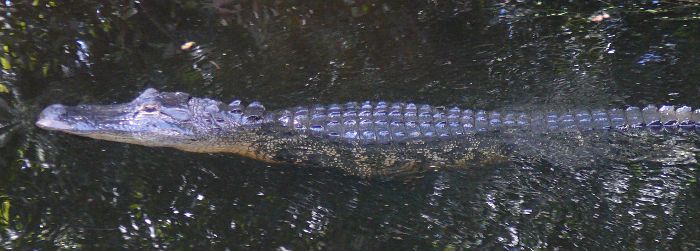
They swim entirely with their tails, their feet tight against their body. One long line of chompy.
Tuesday, September 15th, 2009
This review (found by Mike) was far more coherent than the book it was reviewing, Unscientific America: How Scientific Illiteracy Threatens Our Future by Chris Mooney and Sheril Kirschenbaum.
I checked out the book from the library because I really liked this excerpt, of which my favorite thought follows: (ex-excerpt)
The anti-vaccination advocates are scientifically incorrect; there’s little doubt of that at this point. But whether they could be called “ignorant†or “scientifically illiterate†is less clear. After all, they’ve probably done far more independent research about a scientific topic that interests and affects them than most Americans have.
Now I find this a really intriguing quandary. You ask any crank who believes the opposite of your views, and they’ll generally have reasons, well thought out or less so, but reasons, and usually some numbers or ratios that support their ideas. These numbers may very well be wrong. But numbers! They spouted numbers!
And the thing is, it’s very hard to have that good of a grasp of which numbers are actually correct and significant. It takes a lot of research, a lot of time invested, to learn the jargon of a particular field, and then learn what ideas are well understood and agreed upon by the experts, and which are not. You need that kind of context to be able to weigh outlier opinions and determine whether they express ignorance of facts obvious within the field, or whether they bring up criticisms of ideas that really haven’t been fleshed out, or weaknesses that have been revealed with recent events. The huge majority of people don’t have that kind of understanding.
This book doesn’t profess that we should get everyone to that level of knowledge (which I agree would be impossible), but it also doesn’t have any suggestions on how to differentiate between the cacophony of claims. Ok, so they could have gone in several directions, but while the authors fault “deregulation and decades of mergers [in the media]…. cutting down on substance and quality” and “programming to the least common denominator,” I failed to find any content in their own work. Challenge your readers, dammit, or at least don’t waste their time. I gave up after chapter two and only skimmed the rest.
Maybe it was a problem of not having a target audience. This book is not a book about science and it tries very hard not to alienate the public; there are no big or field-specific words. But it also takes as a given the scientific findings on those exact topics where alarmingly large portions of the public have gotten it wrong. More broadly, I saw no discussion about critical thinking and why we’re so bad at it, or the interplay between fact and myth, or the psychological or evolutionary reasons why we mistake the two, and only a brief mention of how the rest of the world manages with educating their unscientific masses. It’s not even about the threats in our future and how to meet them as a culture, nor did I find any suggestions on how to make the ideas and process of science more interesting and relevant to the public. Just, resurrect Carl Sagan and get out there in the public eye:
We must all rally toward a single goal: Without sacrificing the growth of knowledge or scientific innovation, we must invest in a sweeping project to make science relevant to the whole of American’s citizenry.
It does not bode well in keeping the attention of the masses when you can’t even engage and interest receptive readers that agree that we have a genuine and significant problem on our hands.


